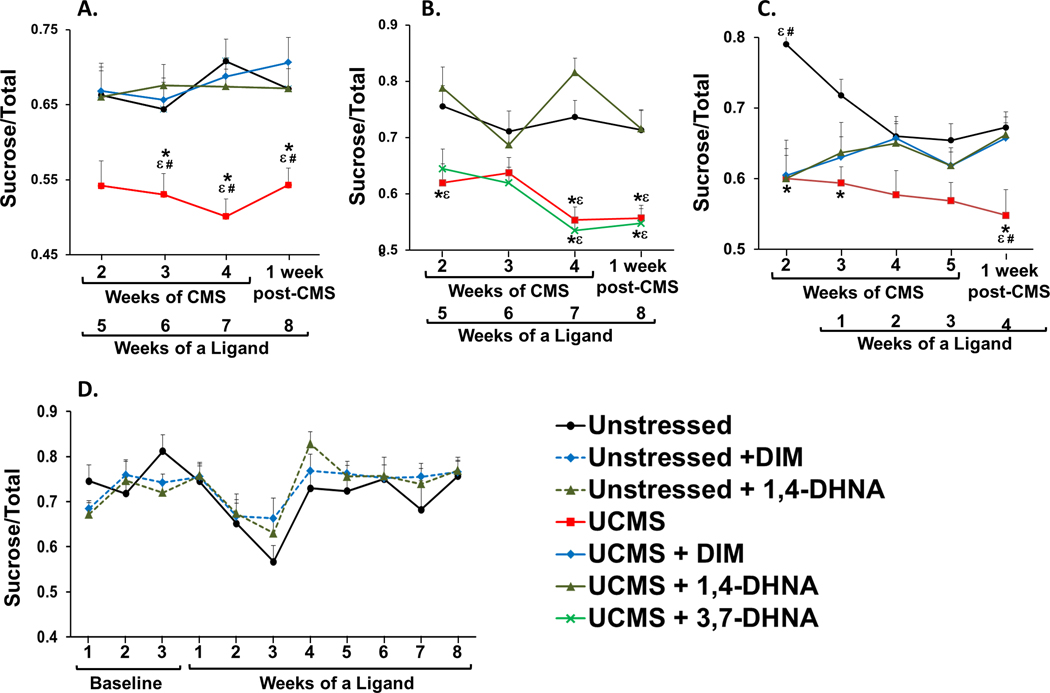Fig. 3.

DIM and 1,4-DHNA, but not 3,7-DHNA, prevented and reversed UCMS-induced decrease in sucrose preference. Mice were unstressed or subjected to UCMS for 4 weeks. (A, B) Sucrose preference was monitored weekly starting at the end of the second week of UCMS, and continuing until 1 week post UCMS. Mice received daily vehicle, DIM, 1,4-DHNA, or 3,7-DHNA for 3 weeks prior to the beginning of UCMS, or (C) or starting and at the third week of UCMS, and then continued for the entire duration of the experiment. (D) Sucrose preference was monitored weekly. Baseline sucrose preference was recorded for 3 weeks, followed by 8 weeks of receiving vehicle, DIM or 1,4-DHNA. (A) Two-way repeated ANOVA revealed a main effect of experimental group (F(3,60) = 14.035, p < 0.0001), but no significant interaction between experimental group and week (F(9,180) = 0.636, p > 0.05). (B) Two-way repeated ANOVA revealed a main effect of experimental group (F (3,28) = 22.192, p < 0.0001), a main effect of week (F(3,84) = 2.996, p < 0.05), but no significant interaction between experimental group and week (F(9,84) = 1.762, p > 0.05). (C) Two-way repeated ANOVA revealed a main effect of experimental group (F(3,60) = 9.962, p < 0.0001), and a significant interaction between experimental group and week (F(12,240) = 1.868, p < 0.05). (D) Two-way repeated ANOVA revealed that there was no main effect of experimental group (F(2,29) = 0.228, p > 0.05), and no significant interaction between experimental group and week (F(2,29) = 1.224, p > 0.05). (*) Bonferroni post hoc contrast indicates a significant difference from unstressed mice (p < 0.05); (#) Bonferroni post hoc contrast indicates a significant difference from stressed mice receiving DIM (p < 0.05); (ε) Bonferroni post hoc contrast indicates a significant difference from stressed mice receiving 1,4-DHNA (p < 0.05). Results are presented as mean + SEM.
